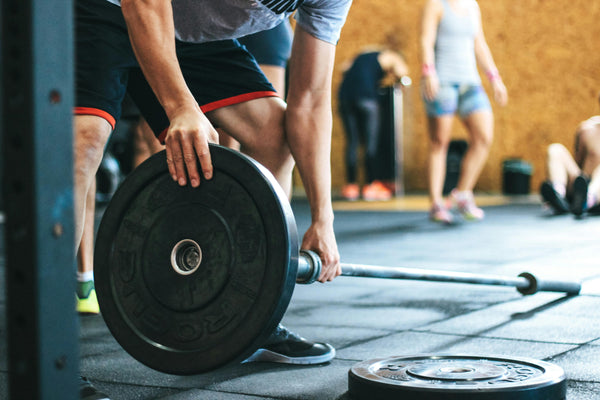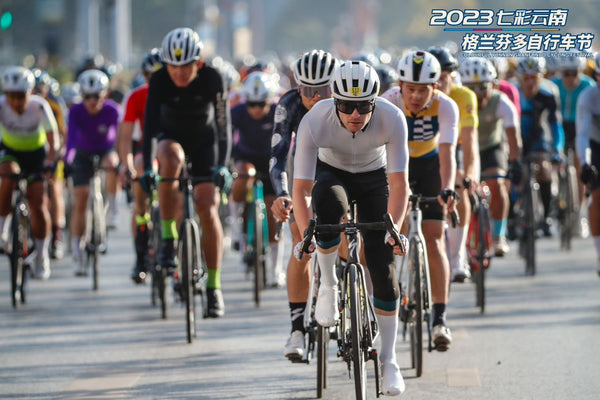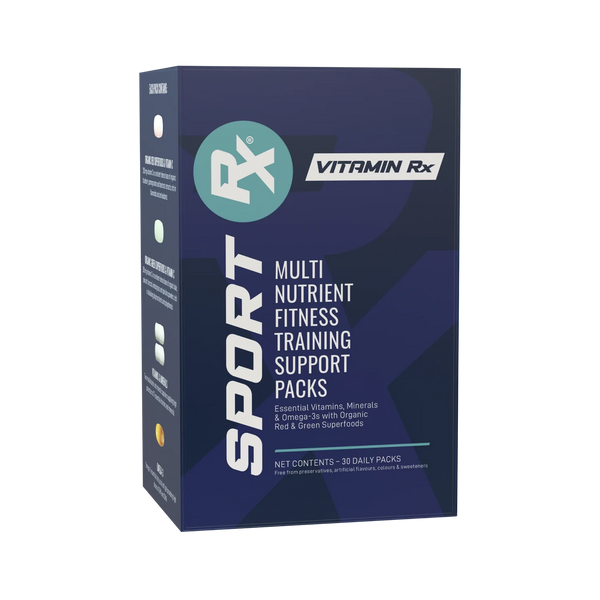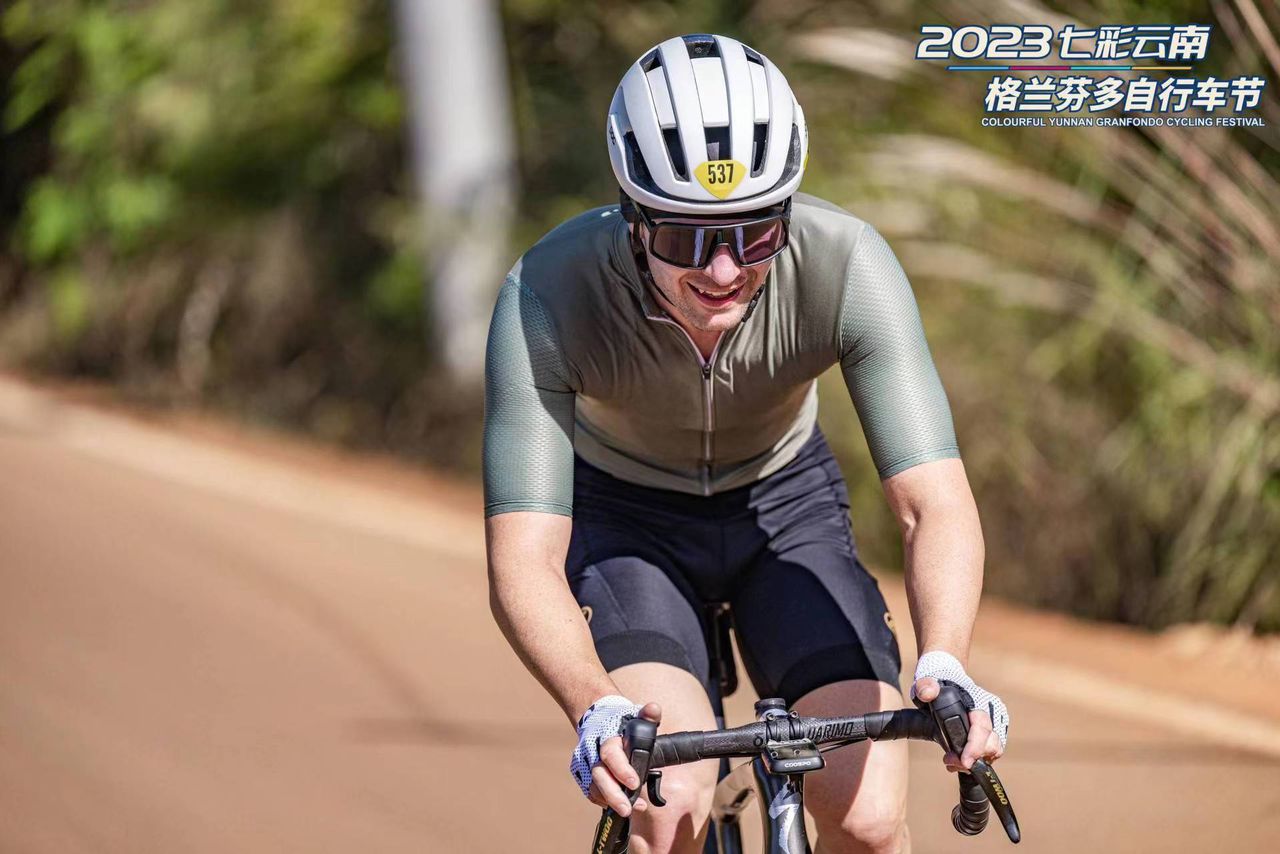Discovering the fine balance between versatility and specialisation in sport and fitness, athletes are increasingly venturing into the realm of hybrid training. To shed more light on this growing trend, we sat down with professional cyclist, Channing Smith who delves into the advantages and challenges of embracing multiple sports in pursuit of athletic excellence.
What is a hybrid athlete?
A hybrid athlete typically refers to someone who excels in multiple sports or athletic disciplines rather than specialising in just one. So, they may divide their time competing or participating in various activities such as running, weightlifting, gymnastics, swimming, and more.
Hybrid athletes often combine different training methods and techniques to achieve their goals. For instance, an endurance athlete like a runner, cyclist or swimmer might incorporate some weightlifting exercises like squats, lunges, deadlifts and overhead presses into their training routine to build strength, power and explosiveness through heavy lifting and compound movements.
The theory is that this hybrid approach will make them versatile and adaptable across a range of physical activities, but what are the downsides to this type of training – for elite athletes and recreational athletes alike? Here are a few pros and cons of hybrid training for recreational athletes to consider.
Pros of hybrid training

Versatility
Hybrid training can benefit your sport as it incorporates various training methods, such as strength training, flexibility work, power moves and sport-specific drills into a weekly routine. This versatility helps in developing a well-rounded skill set and can improve overall athletic performance.
Injury prevention
By incorporating different types of exercises and movements, hybrid training can strengthen supporting muscles, improve joint stability, and address imbalances, reducing the risk of injuries that can result from overuse or muscular imbalances.
However, if you have an upcoming endurance race – you don’t want to arrive at the start line feeling stiff or sore from heavy weightlifting, so it’s important to periodise your hybrid training in racing season and consider your goals as this will ultimately dictate the intensity and frequency of both your running/cycling/swimming and strength training sessions. Another rule of thumb is to make sure not to schedule tough endurance sessions right after intense strength training to give your body enough time to recover.
Mental stimulation
Variety in training can keep athletes mentally engaged and motivated. Switching between different types of exercises and activities can prevent boredom and burnout, leading to better adherence to the training program and improved performance.
Heart health benefits
According to Harvard Health workouts that combine aerobic and strength training in the same session are an efficient way to boost heart health. In a study involving over 4,000 overweight and obese people dealing with weight issues, researchers compared different exercise routines to see how they affected things like blood pressure, cholesterol, and fitness.
The winner? Doing a mix of aerobic and resistance exercises in a single workout session (combined training) showed the best results for improving overall health. Right behind that was hybrid training, which combines bits of both aerobic and resistance exercises. The findings, published in June 2022 in Circulation: Cardiovascular Quality and Outcomes, suggest that mixing up your workouts with a bit of everything could be a great way to boost your heart health and overall well-being.
Cons of hybrid training
Overtraining risk
Without careful planning and monitoring, hybrid training can increase the risk of overtraining, especially if you don’t allow enough time for recovery between different types of workouts. Overtraining can lead to fatigue, decreased performance, and increased susceptibility to injuries.
Lack of specificity
While hybrid training offers versatility, it may not always address the specific demands of a particular sport or event (more on this later in the blog). To counter this, it's important to find a balance between improving your overall fitness and focusing on training that's specific to your sport.
Complexity
Designing and managing a hybrid training programme can be complex, especially if you’re a beginner and not familiar with different training modalities or don’t belong to a gym. Without proper guidance, you may struggle to optimise your training and may not see the desired results. This is where following the guidance of an experienced sports coach or programme is a must!
So, what does a professional cyclist think about the hybrid approach? We sat down with Channing to get his views.
Would you consider yourself to be a hybrid athlete?

“I wouldn’t call myself a hybrid athlete as 99% of my training time from February to December is spent on the bicycle doing cycling-specific workouts. The other 1% is spent doing priming exercises before training.
I train six days per week. A big week of training is 20-25 hours. Those hours will be mostly aerobic work in power zones 1,2 and 3. (Power zones are specific intensity levels used in power-based training, categorised based on a percentage of your maximum sustainable power output on the bike). I then do around one hour of higher intensity intervals that are spread across the week, typically over two separate days.”
What do you do in your off-season?
“From December to February, I spend a few weeks off the bike where I do some fun running. I can run around 4min/km for 5-10km injury-free. Anything faster or longer hurts. I like trying different sports like tennis and soccer. Hiking is great too. I’ll do 1 or 2 gym sessions each week. A typical gym session includes farmers' walks (where you walk while holding heavy weights), lunges and pull-ups. A session is only 20 minutes long.”
Advantages and disadvantages of being a hybrid athlete, both for elite athletes and recreational athletes
“If you’re an elite level athlete, you shouldn’t spread your resources across multiple sports year-round. Professional level sports are brutal, the margins are fine and winning requires a level of specificity and commitment that the average person might never fully grasp.
It's essential to specialise not only in your sport but also in the specific requirements of your target events within the sport. Some questions and considerations that affect training are:
- What will the temperature range be on competition day?
- What are the chances of rain?
- How much wind is likely, at what altitude and at what time?
- What physiological advantages and disadvantages do you have?
- What food is available near the event venue?
When your concerns are this granular, there’s no time to consider competing in another sport. With all that said, some outliers compete at a very high level across many disciplines, but this isn’t the most efficient path to the top.
If, however, you’re not training to be the best of the best, I believe there’s a lot to gain from the hybrid approach. For example, if you’re a recreational runner who chooses to incorporate some strength training in your weekly routine, you’ll be less prone to repetitive use injuries, have stronger bones, increase your speed and explosive power, learn new skills, build a leaner physique, feel stronger and more capable during regular day-to-day activities and more.
If you spend a lot of time training in the gym on your own, you may also benefit from the social aspects of joining a running, cycling or hiking club – as well as reap the rewards of outdoor exercise.”
Tips for success
Channing offers his tried-and-tested tips for optimal recovery and performance:
Double down on the basics like good quality sleep, hydration, and proper nutrition.
Don’t do too much too quickly. Start with short sessions that feel easy and add ‘stress’ over time by increasing your workout frequency, volume, or intensity. This is called progressive overloading. If you increase any of those three too quickly, you’ll more than likely pick up annoying injuries.
Get a strength coach and an endurance coach who will work together to help you determine what your fitness and health goals are. Without a clear goal in mind, your training programme may just be a group of random exercises.

ALSO SEE: Why exercise recovery is so important
What are your go-to nutritional tips?
“There are a few basic ideas that carry across all the athletic disciplines quite well. I think it’s important to know that there is no magic nutrient. We need all of them. What changes from one athlete to the next is the quantity of each nutrient that is required to fuel workouts and then recover.
Here’s an example of my average daily diet:
- Breakfast is the same every day. I have 120g of uncooked whole oats with half a cup of yoghurt, a banana and a coffee.
- During training, I drink between 60-120g of sucrose per hour.
- Post-training I’m a fan of a quick protein shake made with good-quality protein, I’ll drink a double serving before jumping in the shower.
- Late lunch is usually a full bowl of rice with some protein and vegetables. Always salted, often with olive oil and Italian herbs.
- Dinner is the same as lunch. Carbs, protein, fats and veg – I like to keep it simple.
- I take folate in the morning. In the evening, I take vitamin D, Iron and vitamin C.

Editor’s note: if you’re looking for a great multi-nutrient that’ll cover all nutritional gaps and support your fitness journey, consider SPORT Rx’s VITAMIN Rx. This formula is a high-potency combination of vitamins, minerals, antioxidants, omega-3s and organic superfoods helps to nourish and fuel active bodies
Avoid alcohol, build good habits. I know, what a party pooper. But it’s a good idea to save alcohol for special occasions.
For the youngsters out there who want to be elite athletes, I suggest completely avoiding events where drinking will take place. The only alcohol you should want to taste is the Champagne spray when you finally earn your place on a podium.
Athletic careers are short, you don’t have time for bad habits. There’s a quote that I picked up from Charlie Munger which says, “The chains of habit are too light to be felt until they are too heavy to be broken”.
More about Channing

Channing's sports journey reflects his natural talent and unwavering commitment. Here are just some of the sporting achievements he has under his belt:
- Provincial runner 800m & 1200m
- Provincial cricket player
- National triathlete
- National duathlete
- National MTB athlete
- Africa MTB championships 7th place
- Commonwealth games qualifier: Powerlifting
With athletic parents who were both strong runners in their day, Channing had a head start, excelling in provincial running, national triathlons, and more – although swimming was always his weakest link and he had to work hard to make up time in triathlons. His coach, Piers Morgan, played a pivotal role in his success, pushing him to reach new heights with clear goals and structured training.
Though he briefly tried powerlifting and even qualified for the Commonwealth games, Channing admits that he’s not a genetically gifted powerlifter by any means. He says, “I raced mountain bikes at a national level throughout high school but stopped in matric to focus on exams. I then took up powerlifting for a few years. It was difficult to switch from endurance sports to strength sports, but it was an enjoyable challenge.”
After relocating to China with his wife, Channing took up cycling once again and after a year of structured training, managed to grow his functional threshold power (FTP) from 3.1w/kg to 5.3w/kg which is an extremely hard feat. Improving your FTP to this extent means that you can push harder for longer in sports like cycling.
Now he trains and races almost exclusively on the road bike but does race on the mountain bike when given the opportunity. Now fully immersed in cycling, Channing knows sports careers are short but remains dedicated to his passion for racing.

